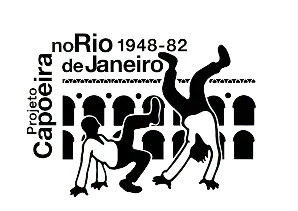Juan Diego Díaz (University of California, Davis)
Davis, CA, Jun 11, 2019
Have you heard about mestre Paraná? If so, did you know that he recorded one of the first capoeira commercial albums in the early 1960s?
Field recordings of capoeira music date back to the 1940s when American linguist Lorenzo Dow Turner visited Bahia and recorded a number of capoeira mestres, including Cabecinha, Bimba, and Juvenal (1940-41). In subsequent decades other researchers such as American Anthropologist Anthony Leeds (1951) and French Anthropologist Simone Dreyfus-Roche (1955) continued this sonic documentation providing precious material for our understanding of the historical development of capoeira musical aesthetics. The first commercial albums dedicated to capoeira only appeared in the 1960s. Curso de Capoeira Regional by mestre Bimba (1962) and Capoeira da Bahia by mestre Traíra (1963) became references for the capoeira community, the former for practitioners of the Capoeira Regional style and the latter for angoleiros. In 1967 Camafeu de Oxossi released Berimbaus da Bahia, an album combining Candomblé and capoeira. Finally, in 1969 appeared Capoeira Angola: Mestre Pastinha e sua Academia and in 1973 Academia de Capoeira Angola São Jorge dos Irmãos Unidos do Mestre Caiçara, the latter combining capoeira and samba-de-roda. Yet, an album recorded as early as 1963 by another Bahian capoeira mestre known as Paraná, has been largely consigned to obscurity.



GENERAL OBSERVATIONS
There are some generalities cutting across the four tracks of Paraná’s album. First, the bateria consisted of one atabaque, at least one pandeiro (maybe two), and three berimbaus (which we will call gunga, medio and viola according to the most used terminology today). Paraná paid close attention to berimbau tuning: in the three instrumental tracks each berimbau maintains a relatively fix pitch: viola (Db4 – Eb4), médio (B3 – Db4), and gunga (Ab3 – Bb3). Interestingly, in the last track Paraná unified the tuning of the berimbaus in Ab3 – Bb3 to accompany song. The second generality is concerned with the normative roles of each instrument. As in any capoeira bateria, the atabaque and pandeiro(s), provide a stable rhythmic bed in 2/4 meter for the berimbaus, which in turn, lead the ensemble with plenty of freedom to improvise. Each toque is formed by a complex texture of three berimbaus that sometimes aligns vertically but, more frequently, interlock. In each of the instrumental tracks the berimbaus tend to start in a relatively stable fashion, articulating patterns that identify the toque. Over time the texture becomes busier and more complex with multiple simultaneous improvised variations by the three bows. Contrary to contemporary practice viola always begins and is followed by either medio or gunga.

TOQUES
Below is a transcription in box notation of the most characteristic patterns featured in Paraná’s instrumental tracks:


“AVISE MEU MANO”
As stated, this is the only track in Paraná’s album featuring song, in this case, the corrido “Avise a meu mano,” which is commonly heard in rodas of all styles. As all capoeira corridos, the form is in call-and-response and in this recording, the refrain is repeated twice before the soloist call. Below are the lyrics.




